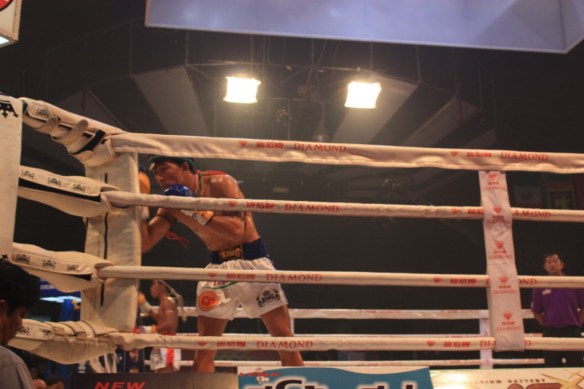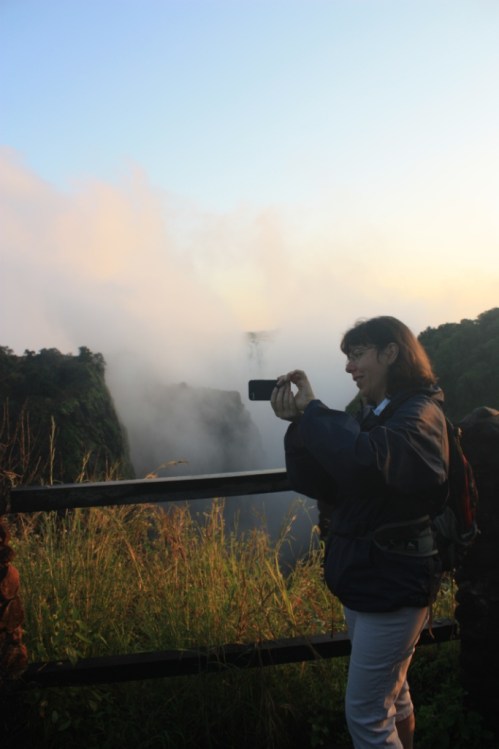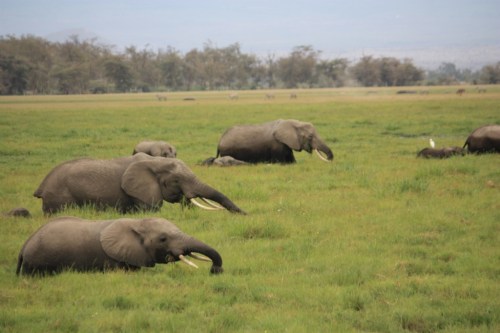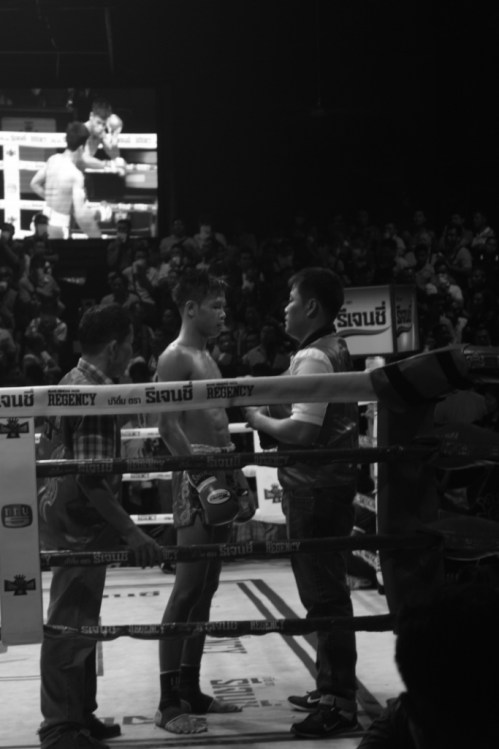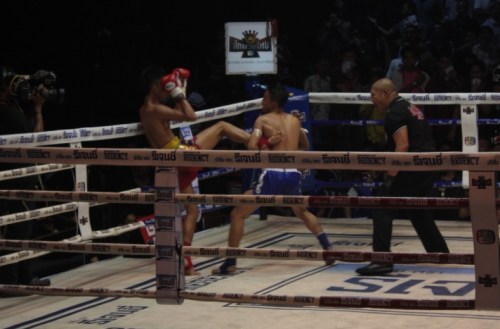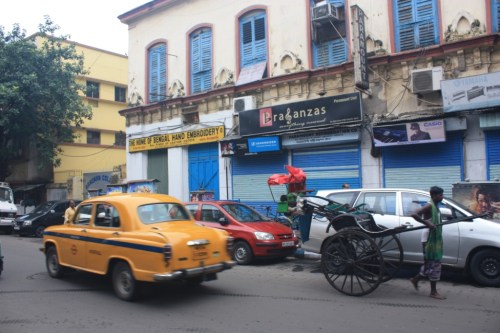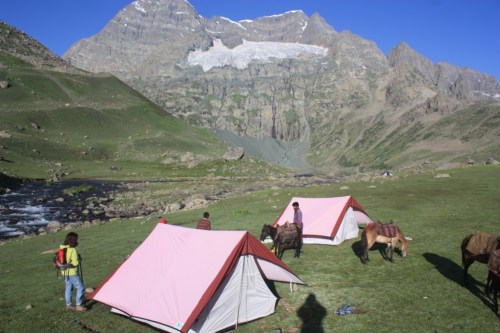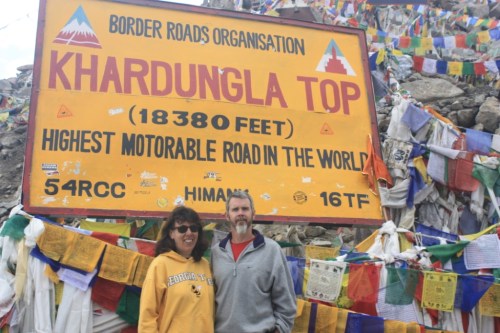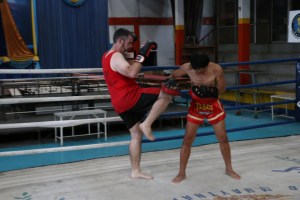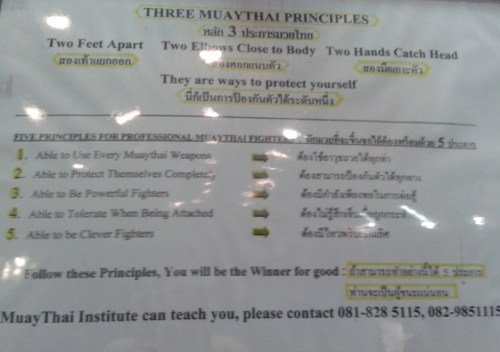Combatives: i.e. Boxing, Wrestling (real, not acted,) Muay Thai, Judo, etc.
Tag Archives: Muay Thai
BOOK REVIEW: Training and Conditioning for MMA ed. by Dias / Oliveira / Brauer & Pashkin
 Training and Conditioning for MMA: Programming of Champions by Stéfane Beloni Correa Dielle Dias
Training and Conditioning for MMA: Programming of Champions by Stéfane Beloni Correa Dielle DiasMy rating: 5 of 5 stars
Amazon.in Page
Release Date: September 15, 2022 [It may already be out in some formats and markets]
Get Speechify to make any book an audiobook
This book provides an overview of fitness building for Mixed Martial Arts athletes. It covers program design, athletic assessment, nutrition, exercises and conditioning practices, and injury prevention methods. On the positive side, it’s not only comprehensive, but – also – presents some of the best and latest methods in combative sports training based on sound scientific research. On the other hand, the book does assume a certain level of understanding of sports science, and it gets pretty deep in the weeds with respect to technical detail and to scientific and specialty jargon. If one doesn’t have such background, one may find some of the content (particularly the early chapters) a bit daunting. That said, it offers an excellent reference for those who are interested in methods and sports science not just for MMA, but for combative sports, in general.
The book uses color photographs throughout. I found the photos to be clear, well-sized, and well-lit. While there is definitely an attempt to keep the number of photos to a reasonable level, they do offer multiple angles where necessary and – generally – give enough pictures to make the action clear. There are also tables after each of the methods sections to give a handy summary of sets, reps, and scheduling suggestions for various exercises. In the early chapters, the ones that convey more technical content, there’re charts, graphs, and diagrams as needed. There’s an extensive bibliography, though it should be noted many if not most of the references are not in English. (The team of editors and contributors is large and international.)
This book offers an excellent reference for coaches, trainers, and athletes. While it does get quite technical, it’s great that it offers insight into cutting edge science and training methods.
View all my reviews
BOOK REVIEW: False Guard by Merwan
 Fausse Garde – NE by Merwan
Fausse Garde – NE by MerwanMy rating: 4 of 5 stars
Amazon.in Page
Out: November 30, 2021
This graphic novel is set in a fantastical world that combines the culture of a Southeast Asian live-in gym, a setting suggestive of “One Thousand and One Nights” supersized to mega-city scale, and some novel creative elements of the author-artist’s imagination. The protagonist, Mane, is a fighter who dreams of making it big in the big city. On the bright side, despite the prejudices against him as an outsider, Mane has the drive and talent to be a champion. However, in a universe of single-minded people (professional fighters,) his energies are split between the gym and his desire to fight for social justice. It turns out that the man leading him into a guerrilla battle against the societal elite, Fessat, is an old intra-gym rival of the gym-owner / coach, Eiam, for whom Mane is fighting.
The story is largely about Mane’s attempts to reconcile these two aspects of himself, and the travails of the bifurcated mentorship he receives from Fessat and Eiam. The fictional martial art of Pankat bears resemblance to Muay Thai / Lethwei / Pradal Serey Southeast Asian style kick-boxing, with a combination of MMA elements to appeal to the present-day reader and some creative details to make it feel more exotic.
For the most part, I found the story and character development compelling. There were some points at which it felt like there was a disjoint between the emotional displays being made and the events at hand. It’s hard to put a finger on what was off, it just felt a bit overwrought at times. Besides a desire to create a visceral story, this is probably meant to reflect Mane’s stress level, but it felt forced at times. It’s also true that Mane is a complex character – at times sympathetic and at other times an impetuous jerk.
If found this book to be enjoyable and engaging.
View all my reviews
DAILY PHOTO: Respect
2017: My Year in Review
 Lilla and I return to Bangalore on New Years Eve from a trip to Hungary by way of Vienna, Austria. It was my first time in Vienna since a similar overnight trip that I believe was over 20 years ago (i.e. my first trip to Budapest in 1994-ish, if memory serves–which it seldom does anymore.) Of course, the parts of the city that attract the eye look the same–the classic Viennese architecture. I’d be lying if I said I had any great recollections from the prior trip except that the weather was cold and drizzly and Vienna’s legendary cafes were much in need. (Fun fact: there’s a Cafe Coffee Day in Vienna. That will mean nothing to my non-Indian friends, but may be interesting to my Indian friends.) This time we had beautiful blue skies and a tolerable dry cold.
Lilla and I return to Bangalore on New Years Eve from a trip to Hungary by way of Vienna, Austria. It was my first time in Vienna since a similar overnight trip that I believe was over 20 years ago (i.e. my first trip to Budapest in 1994-ish, if memory serves–which it seldom does anymore.) Of course, the parts of the city that attract the eye look the same–the classic Viennese architecture. I’d be lying if I said I had any great recollections from the prior trip except that the weather was cold and drizzly and Vienna’s legendary cafes were much in need. (Fun fact: there’s a Cafe Coffee Day in Vienna. That will mean nothing to my non-Indian friends, but may be interesting to my Indian friends.) This time we had beautiful blue skies and a tolerable dry cold.
January was fairly unremarkable except for several trips to the dentist to get a tooth fixed that shattered upon eating a piece of hard but delicious food. Thankfully, the fracture of previously capped tooth was painless–as long as I didn’t drink beverages of extreme temperatures. And Lilla began her busy season that runs through the first few months of each year.
In the later half of February and through early March, I was in Rangsit, Thailand at the Muay Thai Institute to complete  the third level of their Fundamentals course. Thailand is always fun and friendly, and I finally picked the right time of year for Thai-boxing training. [I’ve done the rainy season, and that’s no fun –when you sweat as intensely as I– because nothing ever dries, including one’s shoes. I’ve also trained during the hottest time of year, and the suckiness of that will be self-explanatory to anyone who knows how hot and humid Thailand can get.] On Sundays, I got to see a few new sites around Bangkok (e.g. the Zoo and the Ananta Samakhom Throne Hall) in addition to watching the fights at the Rangsit Arena, but mostly this trip was training four hours per day, six days a week– leaving little time or energy for touring.
the third level of their Fundamentals course. Thailand is always fun and friendly, and I finally picked the right time of year for Thai-boxing training. [I’ve done the rainy season, and that’s no fun –when you sweat as intensely as I– because nothing ever dries, including one’s shoes. I’ve also trained during the hottest time of year, and the suckiness of that will be self-explanatory to anyone who knows how hot and humid Thailand can get.] On Sundays, I got to see a few new sites around Bangkok (e.g. the Zoo and the Ananta Samakhom Throne Hall) in addition to watching the fights at the Rangsit Arena, but mostly this trip was training four hours per day, six days a week– leaving little time or energy for touring.
In April, Lilla and I traveled through four states of India’s Northeast (Assam, Meghalaya, Nagaland, and Manipur.) This is a fascinating part of the country because it feels like a different country–except for Assam. It’s very tribal, and if one can imagine what Burma would be like if Christian missionaries converted most of the population instead of Buddhists having done so, that’s what Nagaland feels like. Highlights of the trip included seeing Indian Rhinos from elephant-back and drinking tea with a group of tattoo-faced old men who’d once taken part in internecine killing. (FYI-This was cannibal country once-upon-a-time.)
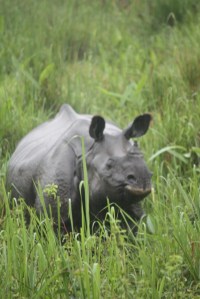 Our Northeast excursion continued into the early part of May. May was also notable for our participation in the TCS (Tata Consultancy Services) 10K run. This was the first time I’d run such a race and probably the first time Lilla ran 10 consecutive kilometers without stopping in her life. (This was not Lilla’s first race though, she’d participated in a shorter race (a 7k) earlier in the year.)
Our Northeast excursion continued into the early part of May. May was also notable for our participation in the TCS (Tata Consultancy Services) 10K run. This was the first time I’d run such a race and probably the first time Lilla ran 10 consecutive kilometers without stopping in her life. (This was not Lilla’s first race though, she’d participated in a shorter race (a 7k) earlier in the year.)
We also returned to stay at the Golden Mist Coffee Plantation Homestay near Madikeri. This is a quiet estate where they grow coffee, tea, and various spices, and it makes for a relaxing weekend away from the chaos that reigns in Bangalore. Golden Mist was one of the first excursions we made when we came to India, and the food and experience was true to our memory of it.
In June we returned to Zambia, and made short side trips to Botswana and Kenya. (The latter because the Kenyan Airline allows one to stay over at no additional cost.) This time Lilla and I made it to Livingstone to see Victoria Falls. During our previous trip to Lusaka, there wasn’t time, and so we were glad we got an opportunity to go back. (To put it in context, going to Lusaka and not going see Victoria Falls is like going to Flagstaff and not going to see the Grand Canyon.)
The trip to Botswana was to Chobe National Park which sits just across the border / Zambezi River. There is actually a point in the middle of the Zambezi River where four countries’ boundaries touch (Zambia, Zimbabwe, Botswana, and Namibia [which has a little negotiated neck of land that stretches to the Zambezi for water access]) and which I would have passed quite close to when crossing at the Kazungula border checkpoint.
In Kenya, I made a trip to Amboseli National Park. This park is most famous for: a.) its spectacular view of Mt. Kilimanjaro which many argue is better than the view in Tanzania (the country in which the mountain actually resides) At any rate, the volcanic cone was entirely socked in with clouds, and so I didn’t get this benefit the view at all. b.) the Maasai people, famous both as warriors and cattle-herders. and c.) the wildlife–and most especially a huge group of elephants who’re supported by the vegetation of a marsh created by Kilimanjaro glacial runoff. The wildlife more than made up for the lack of view of the mountain. In fact, the experience of viewing wildlife in Africa was mind-blowing–dare I say, life-changing. Being on the savanna in Kenya and reflecting on the origins of our species put the world in perspective.
July and August were fairly quiet, though we had an intense rainy season in Bangalore this year. In our first few years in India, the most intense rains all came after the rainy season should have been over. Not so this year.
In September I resumed teaching yoga. I’d been on a hiatus because our plans had been up in the air. Previously, we were supposed to be returning home to United States sometime in the summer or early fall of this year. At any rate, we found out that we’d be staying here almost until our five-year anniversary in India– beyond which Indian visa law prohibits residency. In other words, we are now scheduled to leave India in the summer of next year–i.e. July-ish of 2018. Where we will go remains anyone’s guess, but the Indian government–taking a line from Semisonic’s “Closing Time” says, “we don’t have to go home, but we can’t stay here.” Anyhow, I co-taught a shatkarma (cleansing practices) workshop for a teacher’s training with Amrutha Bindu Yoga Shala. That was a new experience for me, but mostly I’ve been teaching small classes and private lessons on asana (postural practice), pranayama (breath), and yoganidra (relaxation.)
Also in September, we made our first trip to Gujarat to visit Ahmedabad and some of the nearby historic sites. We saw some awesome temples and step-wells, some of which dated back as far as the eleventh century. Ahmedabad was in festival season splendor, heightened by having recently been chosen as India’s first UNESCO Heritage City.
In November I participated in National Novel Writing Month, and for the first time successfully completed the challenge of drafting a 50,000 word novel (novella) in one calendar month. I’ve started this challenge before, but it never really worked either because of ideas failing me or scheduling, but this year we only had one long weekend trip to Rishikesh and my teaching schedule, and so I was able to keep the required daily writing. This time I had the sense to work on a much less convoluted story than the draft that sits on my hard-drive, mocking me like some hallow-souled demon of the abyss.
Rishikesh was awesome and relaxing. We did some rafting on the Ganges, and saw a number of huge ashrams and temples.
That brings me to December. Lilla and I will be going to the Philippines in the latter half of the month for the holidays, with a day-long layover in Kuala Lumpur, Malaysia on the way back. This will be our first time in the Philippines, but our second time to KL. Besides a couple days in Manila, we’ll be in the Visayas, which is the quiet belt of small islands in the middle of the country–as opposed to Luzon (the big island to the North where Manila is located) or Mindanao (the big island to the South in which Muslim rebels are said to be active.)
As with this year, we should be back in Bangalore in time to ring in 2018.
5 Thoughts on the Conscious Mind in Martial Arts Training
In recent years I’ve spent a lot of time trying to quiet the conscious mind in order to let the subconscious do what it does best. There’s a lot of terminology that’s used to describe the mind state in which one’s actions are effortless and one can adjust swiftly to unforeseen challenges: e.g. “in the zone,” the Flow, Zen mindset, and (in the Kotler and Wheal book I just reviewed) ecstasis. However, regardless of the name, one key to this state is a reduced activity of the part of the mind that’s self-critical and overly cautious, and that requires not letting the conscious mind do what it’s prone to do.
However, taking a course on mauythai advanced fundamentals recently has reminded me of the important roles the conscious mind plays in learning. The challenge is to use the conscious mind effectively–without letting it running amok.
The conscious mind is largely driven by anxiety about uncertainty. This makes the conscious mind a planner and worst-case scenario generator extraordinaire. (In meditation, I’ve begun to not only note what thought popped into my head before I dismiss said distraction, but I also have a classification scheme of kinds of thoughts, and “planning thoughts” are probably the most common type of thought to hijack my mind.) This planning / forecasting proclivity can be beneficial if one is doing a job that requires such planning, anticipation of possible hazards, and the need to adjust to complex difficulties. However, it can also make one neurotic, overly risk-averse, and pessimistic.
So, here are my five thoughts on the conscious mind in martial arts training.
5.) Feed the right wolf: There’s a well-known story about a Native American man telling his grandchild that inside each person there are two wolves at war, one good and one evil.
The child asks, “Which one wins?”
The old man replies, “The one you feed.”
This is a variation on the theme–not so much about good and evil as about positive and negative outlook. In martial arts training there are often competing emotional states. On one hand, there is often anxiety about either being injured or even about the embarrassment of being bested. (Surprisingly, it seems like the magnitude of the latter is often greater than the former.) On the other hand, there is an intense thrill that comes with making progress. For those who don’t understand how martial artists can put themselves through what they do, this is the part for which you’re probably not understanding the intensity of the high. When it clicks and you’re getting it right more often than you previously did, the feeling is transcendent.
So, when one sees either of these two feelings arising, choose the latter. If one notices the anxiety, remind oneself the promise of that awesome feeling of having it fall together.
4.) Scanning for lapses in form: The process of learning a martial art–like any movement art–is repetition of the movements until they become ingrained in one’s procedural memory. Early in the process, this feels clunky as one has to scan for imperfections in form with one’s super-intelligent but slow and cumbersome conscious mind. However, increasingly, the body begins to incorporate these movement patterns and they start to become second nature. The trick is to keep this in the moment and not let one’s thoughts linger on what one just got wrong, or any perceived ramifications of getting it wrong.
3.) Try visualization: This once would have been thought hippie guff, but now it’s entered the mainstream. Of course, the advice from #5 must be kept in mind. When I think of the technique of visualization, I’m reminded of a story that Dan Millman told about a girl that he was coaching in gymnastics. He came to check on her only to find her repeatedly cringing and grimacing. He asked what was going on, and she said she kept falling off the balance beam whenever she visualized her routine. It sounds silly, but attitude is a powerful thing, and I lot of people sabotage themselves in ways not much different from this. It’s your mind, you have the power to do the move perfectly every time, if you take the proper mindset.
2.) Conscious mind as governor of action and agent of trust: The subconscious mind can be feral. As one spars, one has to match speeds with one’s opposition so that learning can take place. While sparring looks reminiscent of fighting, the goal of sparring is learning, whereas the goal of fighting is winning (or–as a minimum in actual combat–not being destroyed.)
This is another role for the conscious mind. It can keep reminders to the fore to keep one’s movement appropriate to the occasion. It can inject an awareness that there’s a relationship of trust rather than warring competitiveness between. That one needn’t respond at the same magnitude that one would under attack.
1.) Dropping the Conscious Mind Out of the Equation: While the conscious mind is critical in the learning process, eventually one must do something that feels uncomfortable, which is shifting subconscious operations to the fore and quieting the conscious mind. Overthinking can be death in tests, competitions, not to mention, I’m told, actual combative situations. At some point you’ve got to have some trust in what you’ve trained to do up to that point. It might fail you, but not necessarily as spectacularly as if you let your conscious run amok, getting caught in a death spiral of self-criticism and futile guesswork.
Since I’ve been watching quite a few muaythai fights recently at the Rangsit Boxing Stadium, I’ve begun to wonder just how useful corner advice is. I know that people think it’s beneficial because it’s done in droves. Not only is the fighter’s trainer trying tell them what to do, but also his parents, his siblings, his granny, and a hundred random people who may or may not have put money on him. It would be interesting to see a scientific study of how fighters performed who tuned everything out between rounds versus those who tried to take in all the advice. I tried to look up whether any such study had been done, but a cursor Google search came up empty.
DAILY PHOTO: Vigilant Referee
2016: Our Year in Photos
JANUARY:
-Travel: returned from our December 2015 visit to Vietnam
-Began RYT300 (Int / Adv) yoga teacher training at Amrutha Bindu Yoga
FEBRUARY:
– RYT300 course continued

Teaching yoga at Socare

Learning to cook Indian food at Manju’s Cooking School
MARCH:
-Completed the RYT300 course to obtain my RYT500 certification

The RYT300 Class at Fireflies Ashram to learn Shatkarma
APRIL:
-Traveled to Varkala and Amritsar
-Taught a two-week Kids Camp at a1000 Yoga, Kormangala
MAY:
-Travel: Thailand, Zambia, and Dubai
-Completed the Muay Thai 2 (Int.) at The Muay Thai Institute in Rangsit, Thailand
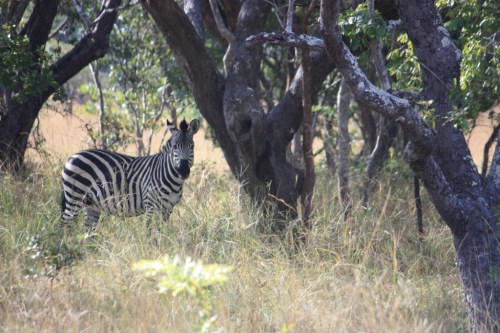
Zebra at the Chaminuka Game Reserve near Lusaka
JUNE:
-Between travels and trainings, a quiet month in Bangalore
JULY:
-Travel: Kolkata and into Jammu & Kashmir for our August travels
AUGUST:
-Travel: Jammu & Kashmir (Srinagar, Sonamarg, Great Lakes Trek, Leh, Nubra Valley, and Pangong Tso) and into Chennai for the beginning of my Vipassana Meditation course
SEPTEMBER:
-Travel: 2 trips to Chennai; the first for my 10-day Vipassana Mediation Course, and the second for a wedding
OCTOBER:
-Travel: rainy season in Goa
-Anniversary month (22 yrs.)
-Took the 5th level test at Kalari Academy but promptly threw my back out–an injury from which I’m still recovering (although it’s down to a mild leg tingle) [I wouldn’t mention it but I think I’m obligated to by the rules of year-end / Christmas letters to mention any health issues.]
NOVEMBER:
-Travel: Singapore
DECEMBER:
-Travel: We’ll be in Hungary (fingers crossed) in the latter half of the month
-Finished a draft of the novel. I don’t know what version this counts as, but it’s the only one so far even close to having an ending that I can tolerate.
-I’ll probably have read about 100 books by the end of the year.
Here’s a pic from another winter trip to Budapest:
Out for May
Principles of Muay Thai
Walking around the lobby of the Muaythai Institute [MTI] is an education unto itself. There are many photos, articles, and memorabilia–as well as a few educational placards. Over the office and weight room there are a series of old photos from an earlier era in the development of this martial art. Of course, Muaythai already had a long history before there were cameras around to document it. (As witnessed by the presence of boxing gloves in the photo above [and most of the other photos here.] Gloves were probably a relatively new addition from the previous rope hand-wraps at the time of many of these photographs.)
Yesterday, I noticed the following poster describing the principles of Muaythai:
As it’s difficult to read, I’ll paraphrase the contents:
First, the three principles of Muaythai:
1.) Feet apart
2.) Elbows close to the body
3.) Hands guard the head
Second, there are the five principles for professional Muaythai fighters:
1.) Use all Muaythai weapons [i.e. fists, feet, elbows, and knees.]
2.) Protect oneself completely.
3.) Be powerful.
4.) Tolerate (persevere) attacks.
5.) Be clever.
I started to think of these guidelines in terms of the concept of budō-kun, which are the guiding principles of a given school of martial arts or even a specific teacher. The budō-kun concept is seen in Japanese martial arts, and at first blush it seems quite different from the muaythai principles stated above. While budō-kun typically have a philosophical / moral bent, the Muaythai principles seem quite pragmatic.
However, one can see broader meanings in these simple statements.
1.) The admonition to use all Muaythai weapons can be seen as a suggestion to be flexible and adaptable, and not to latch onto a single approach. I find the talk in judō about “favorite” or “match-winning” techniques (tokui waza) to be intriguing. Historically, martial artists seem to have avoided giving the impression that they had a favorite techniques. The logic behind this secretiveness can be described by Ralph Waldo Emerson’s quote: “If I know your sect, I anticipate your argument.” Or, expanding further, if I know your feelings on a subject I can respond to them to my advantage.
2.) “Protecting oneself completely” can be seen as valuing one’s body over one’s ego. In Thaiboxing, as in almost all combative sports, one sees instances in which a fighter drops his guard to either encourage an attack or just to showboat for the audience. Sometimes this works out as desired, but often it results in the fighter waking up on his back.
3.) Be powerful seems self-evident, but incumbent in the statement is the need to train hard. One doesn’t become powerful without working hard to develop both form and fitness.
4.) Being able to tolerate being under attack is another point that may seem less than profound, but it speaks to the realization that both fitness and capacity to “take a licking and keep on ticking” matter. Sometimes the outcome hinges on the durability and resilience of a given fighter–much as we might like to think that technique always and everywhere trumps all.
5.) Being clever speaks to the creative element. One must be able to adjust to changing circumstances, and sometimes victory hinges on actions that are unconventional.
I’m curious about the interpretations of others on this subject.



